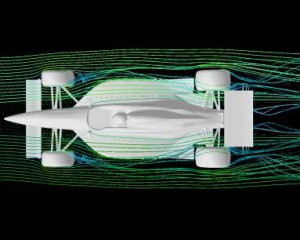As I have already mentioned in previous posts, one of the motivations for starting Page V was to talk about my research. So what do I do? This is a question I always dread. In trying to explain my work to casual company, I usually do so badly that I come across either as extremely dull or, even worse, vaguely condescending. What better way then to exorcise this demon once and for all than with a 1000-word essay that will bore all 3 of my readers to tears? Brilliant!
 |
No, not this kind of modelling… |
The short answer to the titular question: Modelling of biological systems! The word “modelling” often brings to people’s minds the kind of modelling that Kate Moss or Gisele do. Sadly, nothing could be further from the truth. My kind of modelling is much, much, much less interesting than that, and it means the description of systems or processes with the use of mathematical equations. Why would someone decide to do something as mind-numbingly tedious as describing things with equations? Well, there are a couple good reasons actually: simulating behaviour and making predictions about performance.
 |
| Ceci, c’est une voiture… |
Modelling is about creating a representation of an object that you could then run simulated tests on. Think of a car for example. It doesn’t have to be a particularly nice one, any old car will do, but to help your imagination along, here is a picture on the left. A car is in fact a pretty sophisticated piece of machinery. Let’s say you wanted to find out about the car’s performance (speed, turning ability, fuel consumption, when do things start to break down, etc.), and you need this information under all kinds of different conditions (different weather, different terrain, different fuel, or different driving modes). To gather all this data you would have to run hundreds or thousands of tests. If half of those tests required you to blow the engine or crash the car in the process, you would also need hundreds (or thousands!) of cars. That is obviously not the most efficient way to go about it. Instead, you can create a model of a car and simulate the exact same tests. Of course no simulation will give you the same knowledge as actually doing something yourself, so you can then pick a handful of tests that, from the results of your simulations, seem to be the most interesting to perform in real life.
 |
| … ceci, n’est pas une voiture. |
In addition, your model can be used for predictive purposes, and not only to simulate tests. Think of a Formula One Grand Prix, and how important it is to get the fuel load of the car right. One way of finding out the optimal amount of fuel is to run the full race a few times, until you can safely decide which combination of starting weight and refueling strategy gives you the best chance to win. You also need to remember to run your tests under race conditions, and under different weather conditions, to make sure you consider all possible parameters. The other way, and the way that Formula One teams do it, is to gather information from previous races, from the tests you run on the car in the off-season and from the car specifications, and use it to build a predictive model that can tell you the exact amount of fuel you should have in your tank when the race starts.
Another thing to consider is the level of detail of your model. Going back to the car example, you can have a model that describes accurately every little part and component of the car, from the engine, to the windscreen, to the tiniest bolt. Putting the parts together, you would end up with a model that can simulate the behaviour of the car (almost) perfectly. On the other hand, you may not have the information, or the computational power, or the need for such a detailed description. Your model can then be as simple as a single equation, relating speed with fuel consumption. That may still be accurate enough to run hundreds of tests that provide you with ample data for your purposes.
Of course, as I mentioned in the beginning, I do not model cars (even though that would probably have been somewhat more exciting!). What I do model is biological systems and, more specifically, cellular metabolism. Metabolism is the set of chemical reactions that happen in living organisms to maintain life. The word means change or transformation in Greek (Note: let’s just get it over with and accept that I will always plug Greece in these posts. You will simply have to live with it). Metabolism relates to various processes (reactions, if you remember your chemistry) within the cell, which convert food and other substances into energy and compounds used by the cell, for example as building blocks. It is an essential function that allows cells to grow, reproduce, maintain their working parts, repair damage, heal injury and get rid of toxins. Without metabolism, living organisms, including us humans, would die.
Metabolism is very, very, very complicated as the slide above shows. We use modelling and simulation to try to understand a few things about it. As with the car example, our models can serve diverse purposes: we can test a large number of biological hypotheses computationally, without the need to perform all of the costly and lengthy experiments in the lab, instead picking only a handful of the most promising results for further experimental examination. And we can use the models to make predictions about metabolic behaviour, which then supply the basis for formulating a hypothesis that can be verified experimentally. This interaction between simulation and experiment forms the
iterative cycle of knowledge that constitutes the essence of
Systems Biology.What, then, is Systems Biology? A question, perhaps, for another time…


